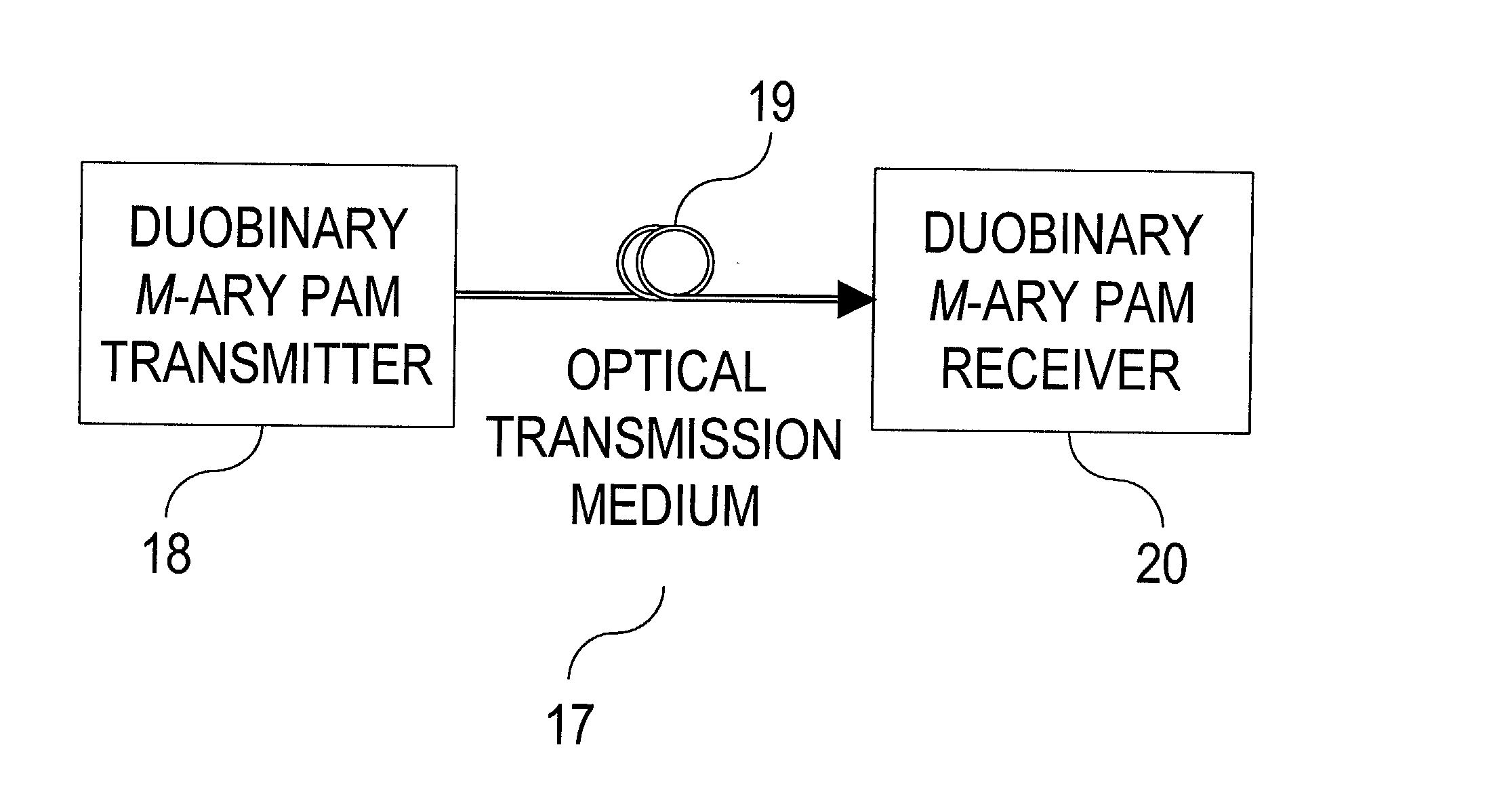Transmission and reception of duobinary multilevel pulse-amplitude-modulated optical signals using finite-state machine-based encoder
a multi-level pulse-amplitude modulation and encoder technology, applied in the field of optical communication systems, can solve the problems of poor average optical power efficiency of multiple-subcarrier modulation, difficult to fabricate filters with sufficiently sharp cutoff and match optical carrier frequency and filter cutoff frequency with sufficient accuracy, and difficult to implement single-sideband optical modulation schemes proposed to da
- Summary
- Abstract
- Description
- Claims
- Application Information
AI Technical Summary
Benefits of technology
Problems solved by technology
Method used
Image
Examples
embodiment 247
[0085] In the encoder 247, the 4-ary pulse-amplitude modulation symbol sequence D.sub.m, denoted by 231a, is input to a finite-state machine, denoted by 232b. The blocks of 2 information bits 250 and 251 are also input to 232b. Within 232b, 250 and 251 are input to a subsequence decomposer 237a, which is implemented using an AND gate with inverters on the inputs. The output of 237a is the logical subsequence S.sub.m,0, which is denoted by 238a. The logical subsequence 238a is input to a logical subsequence precoder, which is denoted by 239. The precoder 239 includes the exclusive-OR gate (modulo-2 subtractor), denoted by 240, as well as the one-symbol delay, denoted by 241, interconnected in a feedback arrangement. The output of the logical subsequence precoder 239 is a logical precoded subsequence Z.sub.m, denoted by 242a. The logical precoded subsequence 242a is related to the logical subsequence 238a by the rule that, during the mth symbol interval, Z.sub.m=S.sub.m,0-Z.sub.m--1 (...
embodiment 371
[0121] The logical subsequence 238a is input to a logical subsequence precoder, which is denoted by 239. The precoder 239 includes the exclusive-OR gate (modulo-2 subtractor), denoted by 240, as well as the one-symbol delay, denoted by 241, interconnected in a feedback arrangement. The output of the logical subsequence precoder 239 is the logical precoded subsequence Z.sub.m, denoted by 242a. The logical precoded subsequence 242a is related to the logical subsequence 238a by the rule that, during the mth symbol interval, Z.sub.m=S.sub.m,0-Z.sub.m--1 (mod2), where Z.sub.m-1 (243a) is the value of the logical precoded subsequence Z.sub.m (242a) during the previous symbol interval, m-1. We note that the precoder 239 is itself a finite-state machine with input S.sub.m,0 (238a), output Z.sub.m (242a), and two states, corresponding to the two possible values of Z.sub.m-l (243a). The operation of 239 is described by the state-transition diagram 234, shown in FIG. 3b. In 234, we have labele...
PUM
 Login to View More
Login to View More Abstract
Description
Claims
Application Information
 Login to View More
Login to View More - R&D
- Intellectual Property
- Life Sciences
- Materials
- Tech Scout
- Unparalleled Data Quality
- Higher Quality Content
- 60% Fewer Hallucinations
Browse by: Latest US Patents, China's latest patents, Technical Efficacy Thesaurus, Application Domain, Technology Topic, Popular Technical Reports.
© 2025 PatSnap. All rights reserved.Legal|Privacy policy|Modern Slavery Act Transparency Statement|Sitemap|About US| Contact US: help@patsnap.com



